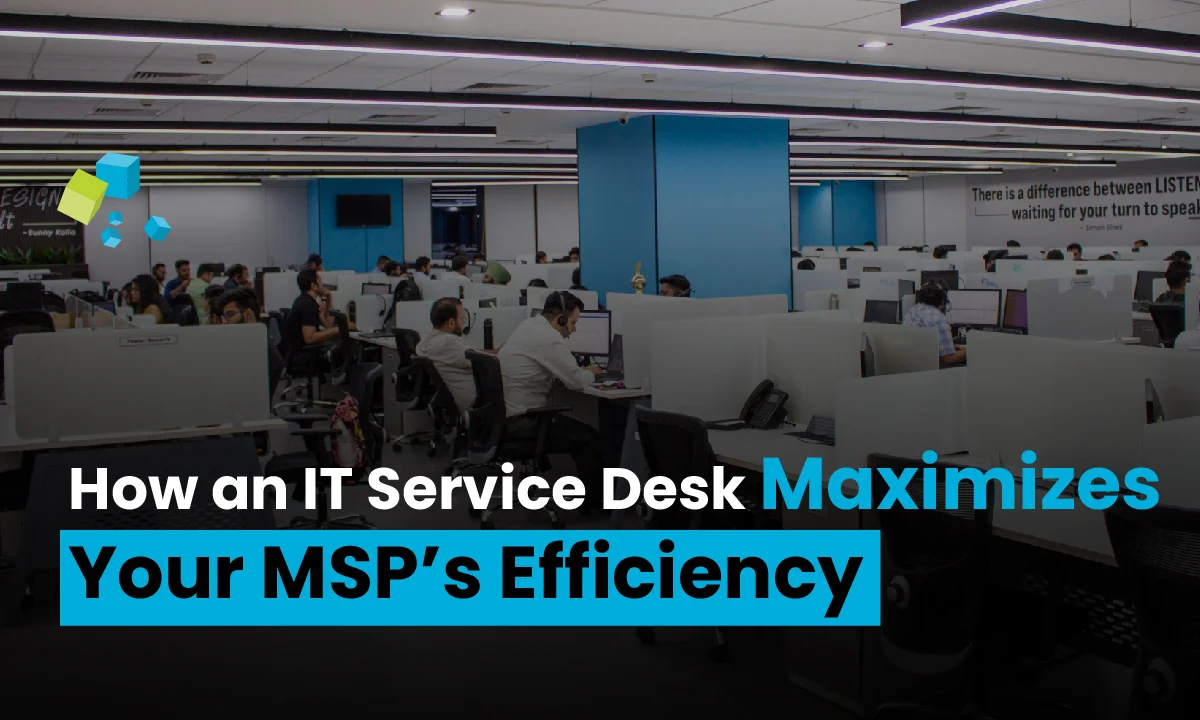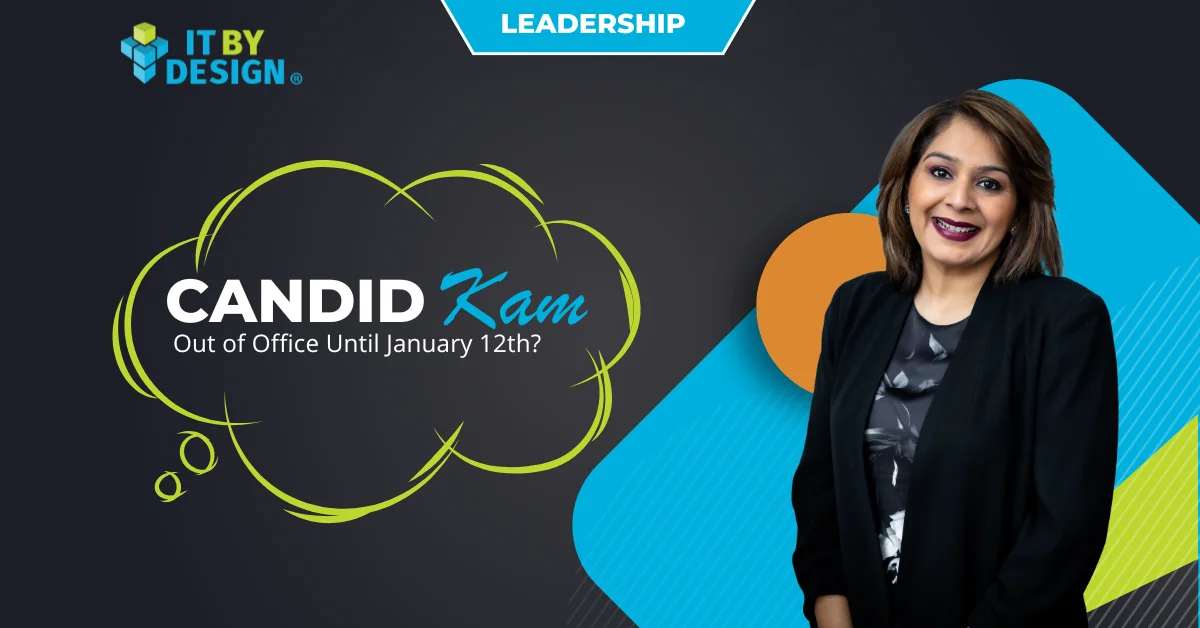It’s imperative that you always look for methods to improve productivity and provide better service. The IT service desk is the hub of this operation; it is an essential part that serves as the first point of contact for customer assistance and problem solving. A well-run IT service desk increases customer happiness, productivity and long-term growth in addition to increasing operational efficiency.
In this blog, we will delve into the key benefits, essential features and best practices for managing an IT service desk.
What is an IT service desk?
An IT service desk is a centralized hub designed to manage and address a wide range of IT-related issues and service requests. It acts as the primary point of contact between your customers and your in-house engineers, ensuring that any technical problems, service disruptions, or user inquiries are efficiently resolved.
What does an IT service desk do?
An IT service desk is the single point of contact (SPOC) between your service team and your customers, whether internal or external. It plays a critical role in ensuring the smooth operation of IT services and systems. Here are the key functions and activities an IT service desk performs:
-
Incident Management
Issue Resolution: The service desk addresses and resolves technical issues and disruptions reported by users, aiming to restore normal service operations as quickly as possible.
Ticket Management: It logs, tracks and manages incident tickets, ensuring that each issue is documented, assigned and resolved efficiently.
-
Service Request Management
User Requests: The service desk handles user requests for new services, such as software installations, hardware upgrades, or access to specific applications.
Fulfillment Processes: It follows standardized processes to fulfill service requests in a timely and organized manner.
-
Problem Management
Root Cause Analysis: The service desk identifies and investigates the underlying causes of recurring incidents to prevent future occurrences.
Proactive Measures: It implements solutions and preventive measures to mitigate potential problems before they impact users.
-
Knowledge Management
Knowledge Base: The service desk creates and maintains a repository of solutions, FAQs, and best practices to expedite issue resolution and empower users with self-help resources.
Documentation: It ensures that all troubleshooting steps and resolutions are thoroughly documented for future reference.
-
Change Management
Managing Changes: The service desk oversees changes to IT services and systems, ensuring that changes are implemented smoothly and with minimal disruption to users.
Communication: It communicates planned changes and potential impacts to users, keeping them informed throughout the process.
-
Continuous Improvement
Performance Metrics: The service desk monitors and analyzes performance metrics such as response times, resolution times and user satisfaction.
Feedback Loop: It collects feedback from users to identify areas for improvement and implement enhancements to service delivery.
-
User Support and Training
Technical Support: The service desk provides technical support and guidance to users, helping them navigate and effectively use IT services and tools.
Training: It offers training sessions and resources to educate users about new technologies, applications and best practices.
-
Security Management
Incident Response: The service desk plays a role in responding to security incidents, such as malware infections or unauthorized access attempts.
User Education: It educates users about security best practices and policies to help prevent security breaches.
What is the difference between IT service desk and IT helpdesk?
Both IT service desks and IT helpdesks are essential for providing support to your customers, but they serve different functions and operate at different levels of complexity. Here are the key differences:
IT Helpdesk Services
Primary Focus: The IT helpdesk is primarily reactive, focusing on resolving immediate technical issues and providing basic support to end-users.
Functions:
- Incident Management: Addressing and resolving technical problems reported by users, such as software glitches, hardware malfunctions and connectivity issues.
- Basic Troubleshooting: Offering first-level support to diagnose and fix common issues quickly.
- Ticket Logging: Logging user issues into a ticketing system for tracking and resolution.
Scope: The helpdesk typically handles straightforward, short-term issues that can be resolved quickly, often within a single interaction.
User Interaction: Direct interaction with end users to provide immediate assistance and support.
IT Service Desk
Primary Focus: The IT service desk is more comprehensive and strategic, focusing on overall IT service management (ITSM) and aligning IT services with business goals.
Functions:
- Incident and Service Request Management: Handling both incident resolution and service requests, such as new service provisioning and access management.
- Problem Management: Identifying and addressing the root causes of recurring issues to prevent future incidents.
- Change Management: Managing changes to IT systems and services to ensure they are implemented smoothly and with minimal disruption.
- Knowledge Management: Maintaining a knowledge base of solutions and best practices to improve efficiency and support.
- Service Level Management: Ensuring that services are delivered according to agreed service levels and monitoring performance against SLAs.
Scope: The service desk handles a wider range of tasks, including complex, long-term projects, strategic planning, and continuous service improvement.
User Interaction: Involves interaction with both end users and other IT teams to coordinate comprehensive IT service delivery.
Summary of differences between IT helpdesk and IT service desk
- Helpdesks handle immediate, basic issues, while service desks manage a broad range of IT services and strategic functions.
- Helpdesks are reactive and focused on quick fixes; service desks are proactive, focusing on overall IT service quality and alignment with business objectives.
- Helpdesks deal with simple, short-term problems; service desks manage complex, long-term projects and continuous improvement.
- Helpdesks are typically employed by less experienced technicians, while service desks have more skilled and certified professionals.
How can an IT service desk benefit your MSP?
An IT service desk is a critical component for you, as it offers numerous advantages that enhance your service delivery, customer satisfaction and operational efficiency.
Improved efficiency and productivity
Centralizing the management of incidents, service requests and changes ensures efficient tracking and resolution. Automation reduces manual efforts, allowing you to focus on strategic tasks. A structured approach helps you quickly identify and resolve issues, minimizing customer downtime.
Enhanced customer satisfaction
Standardized procedures and SLAs provide reliable support. Proactive problem management and monitoring address potential issues before they impact customers. Regular updates and transparent communication foster trust and satisfaction.
Better resource management
Prioritizing tasks based on urgency ensures efficient resource allocation. A knowledge base of solutions and best practices enables quicker issue resolution and empowers customer self-help, reducing support talent demand.
Informed decision-making
Data collection and analysis on incidents and performance metrics provide insights for continuous improvement and strategic planning. Identifying trends through data analysis helps refine services and processes.
Scalability and flexibility
An IT service desk scales with you, accommodating growth and complexity without compromising quality. It manages a wide range of IT services and requests, making it versatile for your diverse customer needs.
Compliance and security
Ensuring compliance with industry standards and regulations protects both you and your customers. Structured change and incident management processes enhance IT security by thoroughly vetting changes and promptly addressing incidents.
How IT By Design can help you with MSP-trained service desk support
To improve your MSP’s operations and customer satisfaction, IT By Design provides you with excellent solutions for IT service desk support. You can be confident that your customers will receive timely and efficient support from our team of helpdesk professionals, who possess the skills and expertise required to tackle a broad range of IT issues specific to the MSP environment.
Here’s how:
- Specialized training: Engineers receive in-depth training on your MSP’s toolkit and customer-first mindset.
- Proactive support: Advanced problem management and monitoring capabilities prevent issues before they arise.
- Efficient resource allocation: Prioritizes tasks based on urgency and impact, ensuring optimal use of resources.
- Scalable solutions: Support that grows with you, accommodating increasing complexity.
- Compliance and security: Ensures adherence to industry standards, protecting you and your customers.
Contact us today to learn more about IT By Design’s tailored solutions can help you transform your service desk for the better.








